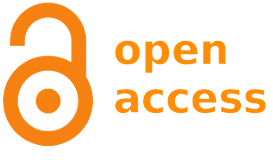Acute effects of functional gymnastic training on blood pressure, heart beat rate and heart beat-pressure product in females
Keywords:
functional training, blood pressure, heart beat rate, hypotension, health
Abstract
The effects of functional training sessions on systolic (SBP) and diastolic (DBP) blood pressure, heart beat rate (HR) and heart beat-pressure product (HPP) in 24 untrained women (25 ± 5 years; 53 ± 6 kg; 164 ± 5 cm; 23.09 ± 2.64 kg m-2; 22.99 ± 3.38% body fat) were investigated. The subjects participated on a functional training class following by a control follow-up. Variables were registered prior to training exercise, and 10, 20, 30, 40, 50 and 60 minutes after training. Whereas ANOVA reported a significant decrease (p < 0.05) in SBP as from the twentieth minute (Δ% = 8.00%, p = 0.001), decrease in DBP started at the tenth minute (Δ% = 5.80%, p = 0.0002). Significant decreases were observed at the thirtieth (Δ% = 5.85%, p = 0.0004) and fiftieth (Δ% = 4.14%, p = 0.006) minute. HR increase was reported immediately after the test (Δ% = 40.02%, p = 0.00) and presented significant decreases as from the fourth minute (Δ% = 7.95%, p = 0.01). Decreases in HPP rates were observed at twenty minutes after the exercise (δ% = 13.5%, p = 0.0002). Data analysis show that functional training sessions triggered significant reductions on SBP, DBP, HR and HPP in young females.Downloads
Download data is not yet available.
Published
2011-03-29
How to Cite
Botelho, L. P., Vale, R. G. de S., Cader, S. A., Senna, G. W., Gomes, M. C. V., & Dantas, E. H. M. (2011). Acute effects of functional gymnastic training on blood pressure, heart beat rate and heart beat-pressure product in females. Acta Scientiarum. Health Sciences, 33(2), 119-125. https://doi.org/10.4025/actascihealthsci.v33i2.9448
Issue
Section
Physical Education
DECLARATION OF ORIGINALITY AND COPYRIGHTS
I Declare that current article is original and has not been submitted for publication, in part or in whole, to any other national or international journal.
The copyrights belong exclusively to the authors. Published content is licensed under Creative Commons Attribution 4.0 (CC BY 4.0) guidelines, which allows sharing (copy and distribution of the material in any medium or format) and adaptation (remix, transform, and build upon the material) for any purpose, even commercially, under the terms of attribution.
Read this link for further information on how to use CC BY 4.0 properly.























5.png)







